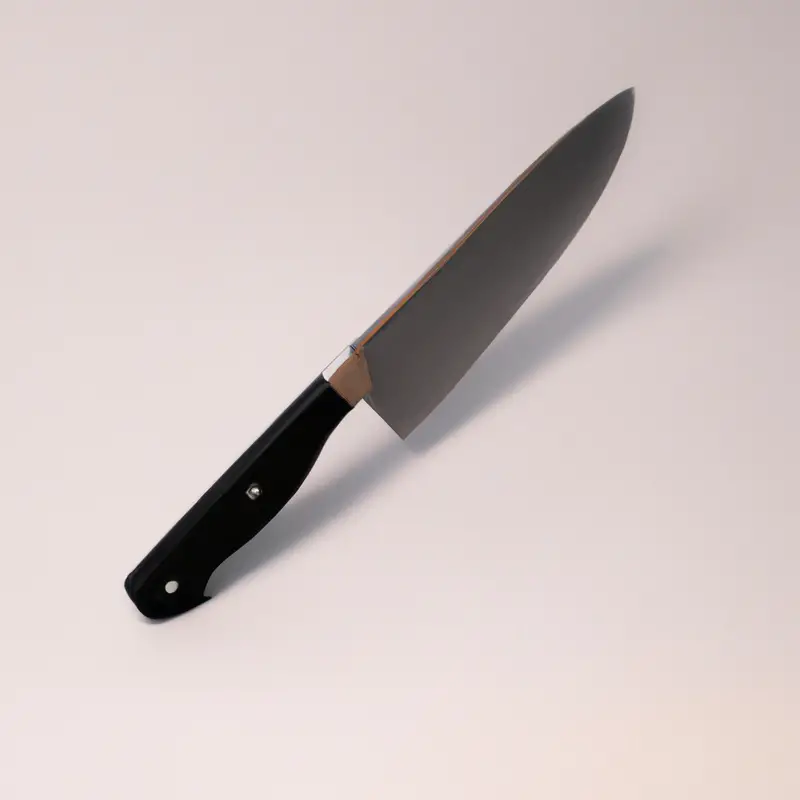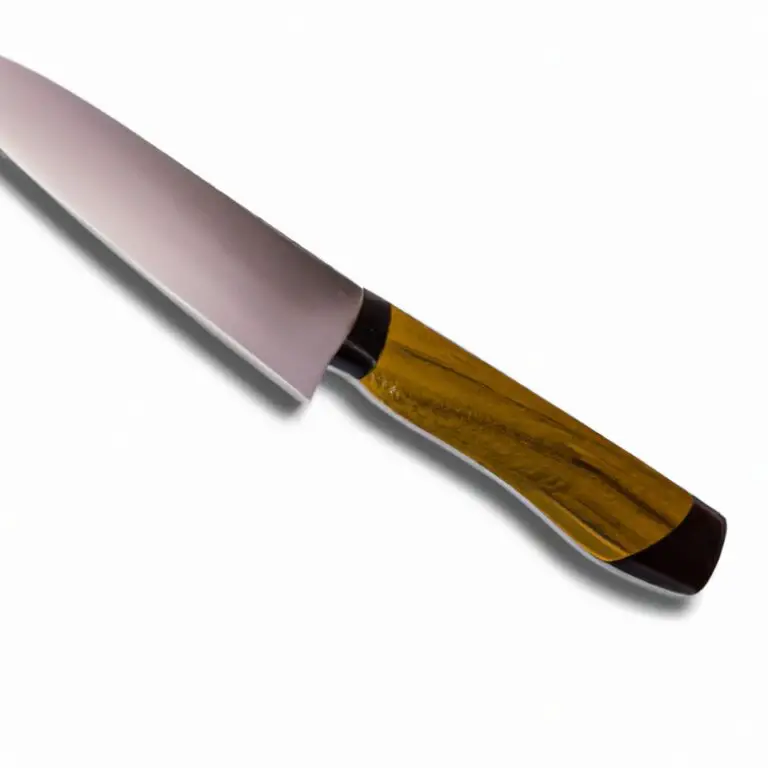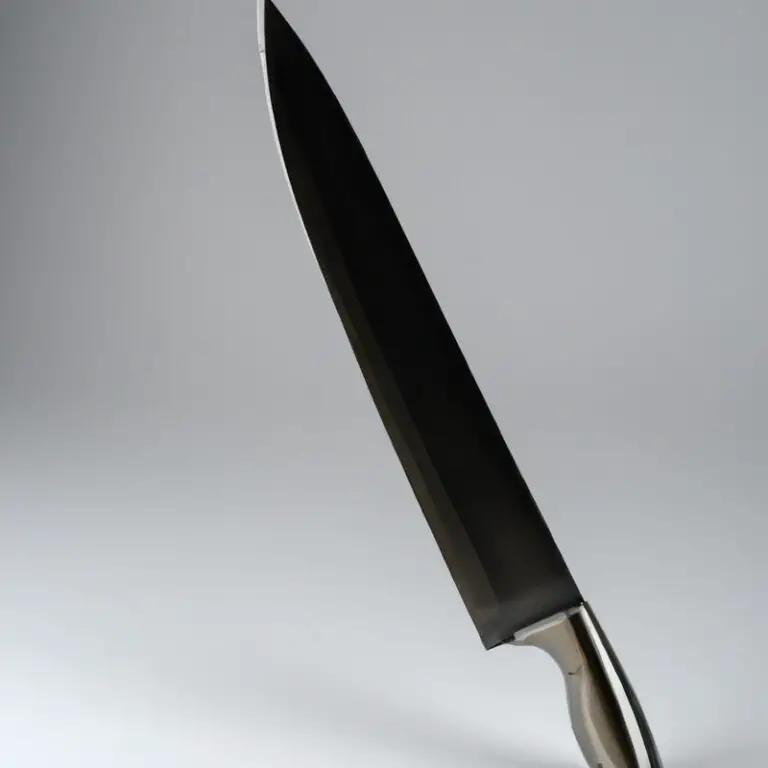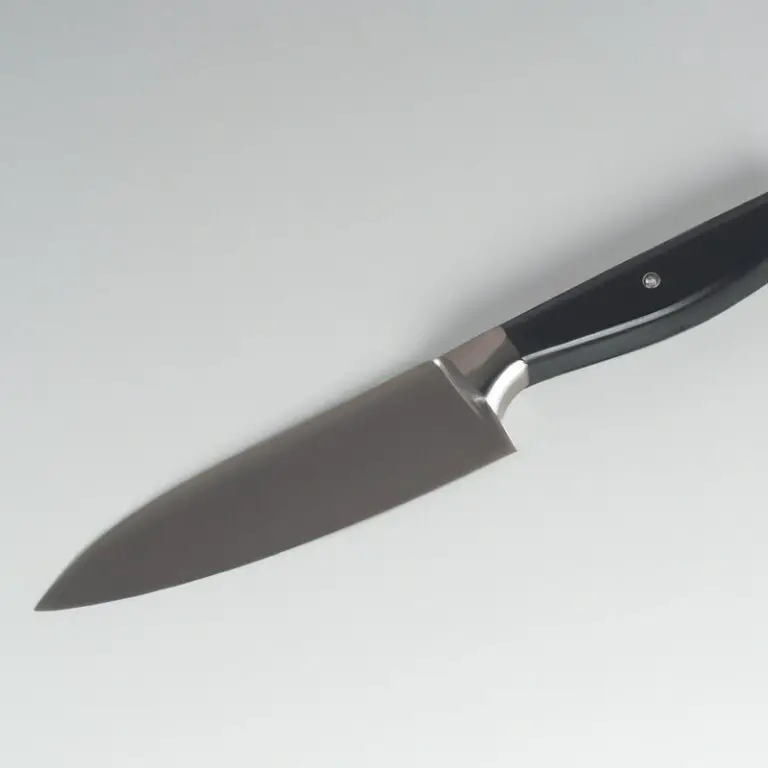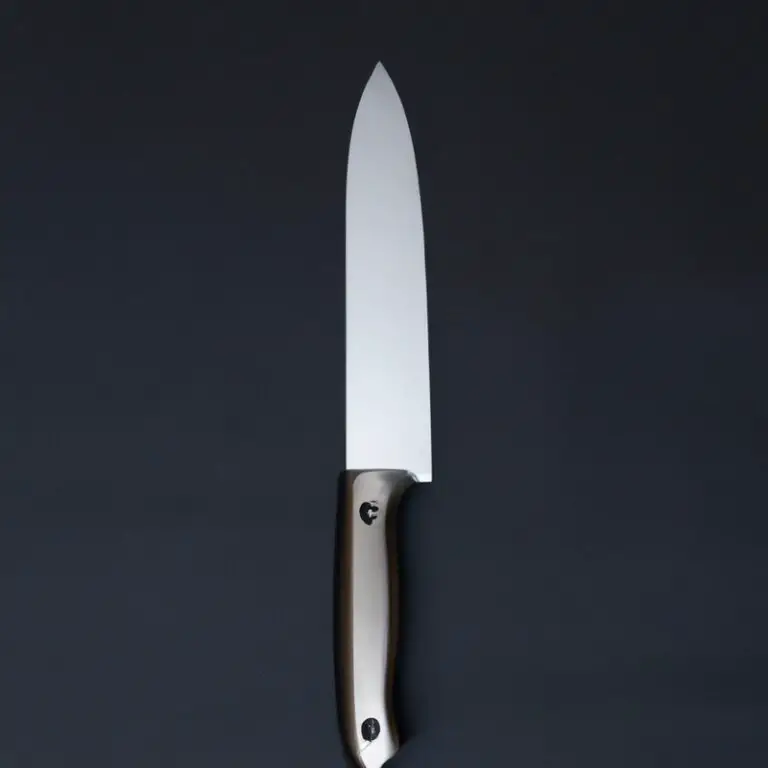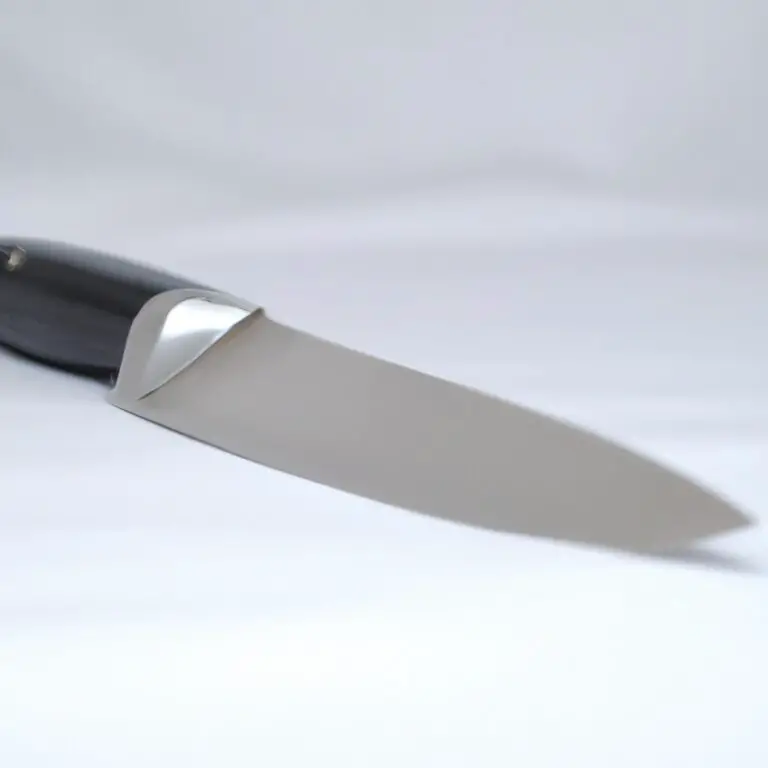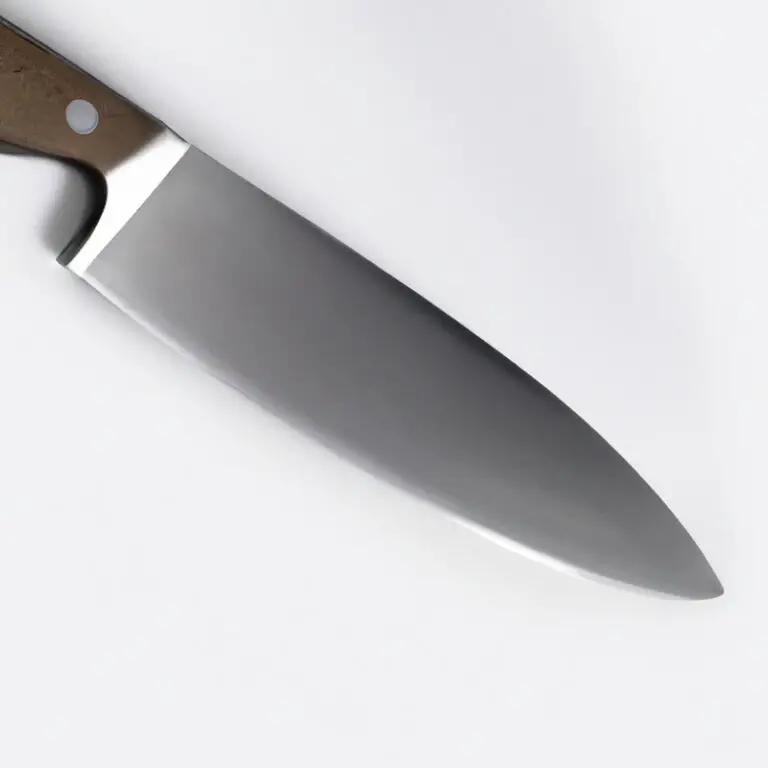What Are The Different Blade Materials Used In Chef Knives?
Key Takeaways:
- Chef knives are made from different blade materials, including stainless steel, carbon steel, ceramic, and laminated steel.
- The choice of blade material affects the knife’s sharpness, durability, and ease of maintenance.
- Stainless steel is a popular choice for chef knives due to its rust resistance and low maintenance, while carbon steel offers sharper edges but requires more care.
- Ceramic blades are extremely hard and maintain their sharpness for longer periods but are brittle and require specialized sharpening tools.
Have you ever wondered what makes a chef knife so sharp and durable? The answer lies in its blade material.
From traditional high carbon steel to modern ceramic, each knife material comes with its own set of advantages and disadvantages.
In this comprehensive guide, we’ll dive into the various blade materials used in chef knives, including their strengths, weaknesses, and ideal uses. Whether you’re a professional chef or a home cook, understanding blade materials is key to finding the perfect knife for your needs.
So, let’s sharpen our knowledge and explore the exciting world of chef knife blades.
| Blade Material | Pros | Cons |
|---|---|---|
| Stainless Steel | Durable, rust-resistant, easy maintenance, affordable | Not the sharpest edge, can be difficult to sharpen |
| Carbon Steel | Sharpest edge, durable, easy to sharpen | Prone to rusting, requires more maintenance, expensive |
| Damascus Steel | Stylish, strong, sharp edge, unique pattern | Expensive, difficult to sharpen, more brittle |
| Ceramic | Lightweight, razor-sharp edge, no metallic taste in food | Fragile, can easily chip or break, expensive |
| Titanium | Durable, rust-resistant, lightweight | Difficult to sharpen, expensive |
Types of Blade Materials Used in Chef Knives: A Comprehensive Guide
Chef knives can be made from a variety of materials, each with its own advantages and disadvantages. Stainless steel is a popular choice for its durability and corrosion resistance but lacks the sharpness of high carbon steel.
Damascus steel is aesthetically pleasing, but can be expensive.
Ceramic blades are lightweight and durable, while laminated steel can be customized by combining different metals. Carbon steel blades with a titanium coating offer robustness and rust-resistance, while VG-10 steel blades provide excellent edge retention.
Cobalt steel blades are durable and heat-resistant, and molybdenum stainless steel offers a balance of strength, sharpness, and corrosion resistance.
Choosing the right blade material depends on individual preferences and factors such as budget, intended use, and maintenance requirements.
Stainless Steel Blades: Advantages and Disadvantages in Chef Knives
Stainless steel blades are a popular choice among chefs for their durability, resistance to rust and corrosion, and ease of maintenance. They are also affordable and widely available.
However, stainless steel is not as hard as some other blade materials, such as high carbon steel, and may not retain its sharp edge as well.
Some chefs prefer a sharper blade for precise cuts and may opt for a harder material. Additionally, stainless steel may not offer the same level of aesthetic appeal as other blade materials, such as Damascus steel.
High Carbon Steel Blades: Superior Sharpness and Strength for Chef Knives
High carbon steel blades are preferred by many professional chefs for their superior sharpness and strength. These blades are made of high-quality carbon steel that contains a higher percentage of carbon than regular steel.
This results in a harder, more durable blade that can hold a sharp edge for longer periods.
High carbon steel blades are also resistant to wear and corrosion, making them a reliable and popular option for chefs who demand high-performance knives. One of the drawbacks of high carbon steel blades is that they are more prone to rust and staining than stainless steel blades.
Chefs must take extra care to clean and dry these blades thoroughly to prevent corrosion.
However, with proper maintenance, high carbon steel blades can last for many years, delivering exceptional sharpness and strength. Overall, high carbon steel blades are an excellent choice for chefs who prioritize performance and durability in their knives.
They may require extra care and attention, but the superior sharpness, strength, and endurance that they offer make them a worthwhile investment for serious chefs.
Damascus Steel: The Aesthetic and Performance Benefits in Chef Knives
Damascus steel is a combination of two or more steel alloys that are folded and layered multiple times to create a stunning pattern. This technique not only creates a visually appealing design on the blade of the knife but also imparts superior strength, durability, and sharpness to the knife.
The unique layering process of Damascus steel results in a blade that is capable of retaining a sharp edge while remaining resilient to wear and tear.
The aesthetic design combined with the superior performance makes Damascus steel a popular choice for high-end chef knives. However, due to the complex manufacturing process, Damascus steel knives can be costly and require special care and maintenance to maintain their sharp edge and unique pattern.
Ceramic Blades: Lightweight and Durable for Modern Chef Knives
Ceramic blades have emerged as a popular material for modern chef knives. These blades are lightweight, making them easy to handle and maneuver in the kitchen.
They are also incredibly durable, resisting wear and tear from prolonged use.
Ceramic blades are made through a process involving extreme heat and pressure, resulting in blades with exceptional hardness and sharpness. They are also resistant to rust and corrosion, making them ideal for use in kitchens with high humidity.
However, ceramic blades are brittle, and they can chip or crack if not handled with care.
Proper maintenance and handling are crucial for extending the lifespan of ceramic blades in chef knives. Overall, ceramic blades offer a unique combination of lightweight, durability, and sharpness that make them a popular choice for modern chefs.
Powder Steel: The Emerging Blade Material in High-End Chef Knives
Powder steel is a high-performance blade material that has recently gained popularity in the production of high-end chef knives. The manufacturing process involves the transformation of steel into a fine powder, which is then compressed and heated to create a dense, uniform metal.
This results in a blade with exceptional sharpness, edge retention, and durability.
Powder steel blades are also less prone to chipping and corrosion compared to other blade materials. Overall, the emerging use of powder steel in chef knife production offers a promising option for chefs seeking top-quality knives that can withstand heavy use in professional kitchens.
Laminated Steel: Combining Different Metals for Customised Chef Knives
Laminated steel is a type of blade material that combines different layers of metals to create a customised and unique chef knife. This steel is made by sandwiching a hard carbon steel core between layers of softer stainless steel.
The resulting blade is incredibly sharp, durable and has a beautiful aesthetic.
This layering of metals allows for the benefits of both hard and soft steel, creating a blade with a sharp edge and excellent corrosion resistance. Laminated steel is often used in high-end Japanese knives, but can also be found in other high-quality chef knives.
Carbon Steel Blades with Titanium Coating: A Robust and Rust-Resistant Option
Carbon steel blades with titanium coating are a popular choice for chef knives due to their robustness and rust-resistance. The carbon steel provides excellent sharpness and strength, while the titanium coating adds an extra layer of protection against corrosion.
This combination results in a sturdy yet durable blade that is easy to maintain.
Moreover, the hard titanium coating also increases the blade’s wear-resistance, ensuring it retains its sharp edge over a longer period. However, carbon steel blades require regular maintenance to avoid rust formation, and the thin titanium coating may eventually wear off with heavy use.
Nonetheless, carbon steel blades with titanium coating are a reliable option for those who desire a high-performing yet low-maintenance chef knife.
VG-10 Steel Blades: The Japanese Steel with Exceptional Edge Retention for Chef Knives
VG-10 steel is a high-quality Japanese steel blend that has exceptional edge retention for chef knives. It is composed of various elements such as carbon, chromium, molybdenum, vanadium, and cobalt that make it incredibly durable, corrosion-resistant, and able to withstand high temperatures.
Chef knives made with VG-10 steel have a sharp and stable edge, which means they need less sharpening and maintenance than other blades.
VG-10 steel is a popular and reliable choice among professional chefs because it is known for its precision and long-lasting performance. If you are looking for a high-quality chef knife with exceptional edge retention, then VG-10 steel blades are a great option to consider.
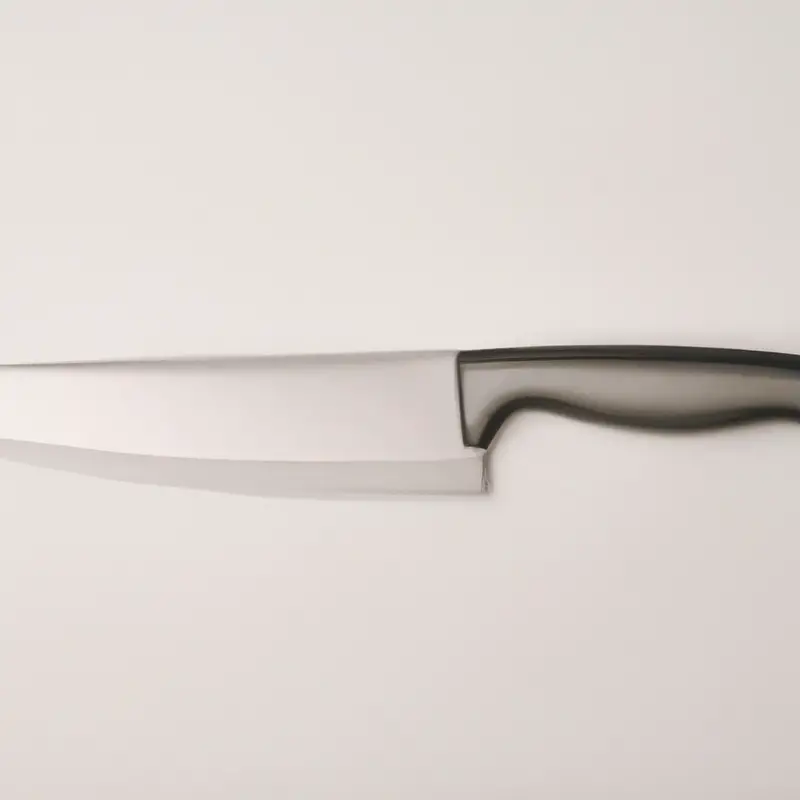
Cobalt Steel Blades: The Durable and Heat-Resistant Option for Chef Knives
Cobalt steel blades are a popular choice for chef knives due to their durability and heat-resistance. These blades contain a significant amount of cobalt, which helps them maintain their sharpness and strength even when exposed to high temperatures.
Cobalt steel blades are also resistant to corrosion, making them easier to maintain than other types of steel blades.
However, they can be difficult to sharpen and are generally more expensive than other blade materials. Overall, if you’re looking for a durable and reliable chef knife that can withstand heat and wear, cobalt steel blades are a great option to consider.
Molybdenum Stainless Steel Blades: Balance of Strength, Sharpness, and Corrosion-Resistance in Chef Knives
Molybdenum stainless steel is a popular blade material in chef knives due to its balance of strength, sharpness, and corrosion-resistance. It is composed of a blend of high carbon stainless steel and molybdenum, which enhances its hardness, durability, and rust-resistance.
Molybdenum also increases the steel’s ability to hold an edge, making it a suitable material for those who prefer sharper knives.
Furthermore, its resistance to corrosion makes it easy to maintain and ensures a longer lifespan for the knife. Overall, a molybdenum stainless steel blade is a reliable and practical option for any chef who requires a knife that can withstand daily use.
Choosing the Right Blade Material for Your Chef Knife: Factors to Consider
When choosing the right blade material for your chef knife, there are several factors to consider, such as:
- Purpose: What will you use the knife for? Different materials offer varying levels of sharpness, durability, corrosion resistance, and edge retention.
- Maintenance: How much care are you willing to give to your knife? Some materials require more maintenance than others, such as ceramic and carbon steel blades.
- Budget: How much are you willing to spend? Some high-end materials like powder steel and Damascus steel come at a premium price.
- Personal preference: What do you like? Some materials are heavier or lighter than others, some have unique aesthetics, and some offer a different feel when cutting.
By considering these factors, you can find the best blade material for your chef knife that meets your needs, budget and personal preferences.
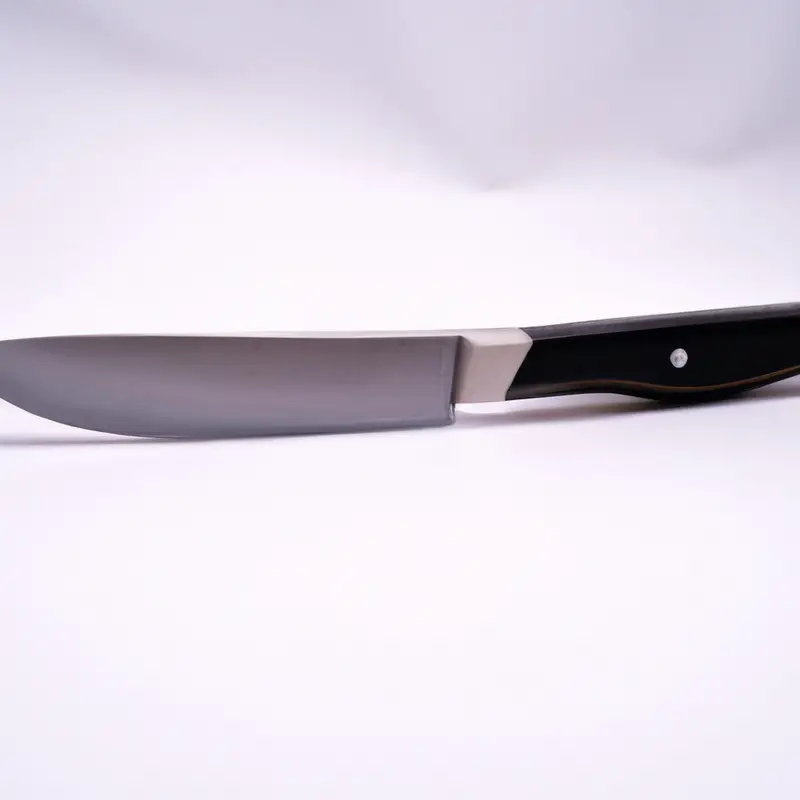
Blade Materials for Specific Chef Knife Styles: Santoku vs Chef’s Knife vs Serrated Knife
Different chef knife styles require various blade materials to achieve optimal performance. Chef’s knives and Santoku knives are versatile and require materials known for its durability and sharpness.
High-carbon stainless steel, VG-10 steel, and cobalt steel blades are some of the most popular materials for these types of knives.
Meanwhile, serrated knives require harder and more durable materials such as ceramic and Damascus steel to make the serrations last longer. Ultimately, the choice of the blade material depends on the intended use of the knife.
Importance of Maintaining Blade Materials: How to Sharpen and Clean Your Chef Knife Properly
Maintaining the blade material is crucial to ensure your chef knife performs optimally and lasts long. Sharpening and cleaning your chef knife properly is essential to maintain its sharpness, prevent rust and discoloration, and prevent accidents.
Using a dull or dirty knife increases your risk of accidents and decreases your efficiency.
Sharpening your chef knife regularly using a sharpening stone or honing rod will restore its sharpness. Cleaning your chef knife using warm soapy water and immediately drying it after use prevents rust and discoloration.
Avoid using hard or abrasive materials to clean the blade as this can damage the blade material.
With proper maintenance, your chef knife will perform optimally and last longer, thereby avoiding unnecessary expenses.
The Future of Blade Materials in Chef Knives: Advancements and Trends to Look Out For
The future of blade materials in chef knives is constantly evolving with new advancements and trends emerging. One exciting development is the increasing popularity of powdered metallurgy (PM) steels, which offer superior durability, sharpness retention, and corrosion resistance.
Another trend is the use of innovative composite materials like Graphene and Carbon Nanotubes, which can make blades stronger, lighter, and more durable.
In addition, traditional materials like Damascus and laminated steel continue to be refined and enhanced to achieve better performance and aesthetics. As the demand for sustainable products grows, eco-friendly and recycled blade materials like recycled steel, titanium, and aluminum are also gaining traction in the market.
With the rise of smart home technology, internet-enabled knives that can monitor and report the blade’s condition, sharpness, and usage are also expected to become more prevalent.
Overall, the future of blade materials in chef knives is set to bring exciting advancements that challenge and surpass current industry standards.
Final Verdict
Choosing the right blade material for your chef knife depends on various factors such as your personal preferences, cooking style, and budget. Understanding the advantages and disadvantages of each material is crucial in making an informed decision.
Remember to maintain your chef knife regularly by sharpening and cleaning it properly to prolong its lifespan and optimize its performance.
With advancements and innovations in blade materials, the future of chef knives looks promising. As a reader, I hope this comprehensive guide has provided valuable insights and practical takeaways that will inspire you to invest in a quality chef knife that suits your unique needs.
At the end of the day, a chef knife is not just a tool but an extension of yourself in the kitchen, and choosing the right blade material can make all the difference in your culinary journey.

